Many of you familiar with the propaganda produced by the British women’s suffrage campaign will recognise this image, which was printed by Weiners of Acton and published as a poster by the Artists’ Suffrage League. In The Spectacle of Women, Lisa Tickner dates it to c 1908; the catalogue of The Women’s Library@LSE to c 1912. I would tend to support the earlier date.
The artist is known to be Emily Jane Harding Andrews. But who was she? What can we discover of the life behind that image?
She was born Emily Jane Harding in 1851 at Clifton in Bristol, the eldest of the several children of Thomas Giles Harding (1827-1899), a commercial traveller, and his wife, Rosa Jane (nee May). Emily and her sister, Rosa Elizabeth Harding, were educated at Clifton Ladies’ College and in October 1868 both gained certificates of art in the second grade in a prize giving at the Bristol School of Art.
By 1871 the family had moved to London . They moved around the Kensington, Hammersmith, Shepherds Bush area but their first address was 21 Holland Road, Kensington. Emily clearly continued with her art studies. She exhibited portrait miniatures at the Royal Academy in 1877, 1897, 1898. Now in the National Portrait Gallery is a chalk portrait of Arthur Penrhyn Stanley (d 1881), dean of Westminster. Was this the work that she exhibited at the RA in 1877?
By the time the 1881 census was taken Emily was married to a fellow artist, Edward William Andrews – although I cannot find a record of the marriage. He was ten years older than her and had been born in Kidderminster. By the time he was 21 was describing himself on the census form as ‘Artist portrait painter’. The only paintings I can locate by him are copies of two portraits after Gainsborough – see here.
In 1881 Emily and her husband were living, with one servant, at 23 Iverson Road, west Hampstead. By 1891 they had moved to Chalcot Gardens, Hampstead, an area popular with artists, and now had no servant. In 1901, still fending for themselves, they were living in a flat in 95 Fitzjohn’s Avenue, Hampstead.
Through the 1880s and 1890s Emily produced illustrations for a series of books – mainly for children. They included Bright Pages for Children of All Ages, 1886, Helen Milman’s The Little Ladies, 1890, Merry Moments for Little Folks by Rose E May, published by Frederick Warne, 1893. Emily’s sister, Rosa (or Rose) had married Frederick Lamartine May, son of a well-known bookseller, and a relation on their mother’s side. She also provided the illustrations for Disagreeable Duke: a Christmas whimsicality for holiday boys and girls by Elinor Davenport-Adams, published by George Allen, 1894 and in the same year for Lullabies of Many Lands by the editor and translator Alma Strettell,
In 1896 Emily Harding (the name under which she then published her work) was both the translator (from the French) and the illustrator of Fairy Tale of the Slav Peasants and Herdsman by Alex Chodsko, published by George Allen.
I don’t know how Emily Harding Andrews made contact with the Artists’ Suffrage League, although it’s hardly surprising, moving as she did in artistic, bookselling and publishing circles. Besides the poster illustrated as the introduction to this article, Emily Harding Andrews designed another for the ASL – ‘Coming in with the Tide – Mrs Partington’ – and was on sufficiently close terms with Mary Lowndes, the ASL’s leading light, to propose a design for a Christmas card -sent with an informal note on the reverse. It can now be found in Mary Lownes’ ASL album in the Women’s Library@LSE.
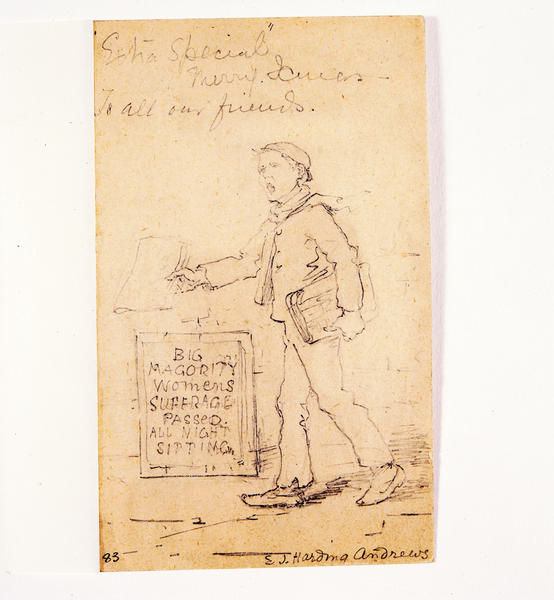
A rough design by Emily Harding Andrews for a suffragette Christmas card. It was never issued Image courtesy of VADS)
Although clearly supportive of the suffrage campaign, Emily Andrews, like Mary Lowndes, did not boycott the 1911 census. This shows us that – married for 31 years, with no children – she was living, aged 61, as a boarder at 15 Bank Place, Bayswater. She still described herself as an artist. Her husband, on the other hand, was enumerated in his one-room studio at 48 Fortune Green Road, Hampstead. Had they separated?
Edward Andrews died in 1915, while living at 1 Linden Gardens, Hornsey Lane. He left £160; his wife is not named as an executor.
I next find Emily Harding Andrews in 1918, living at 6 St George’s Square, Camden, at the same address as another artist of her generation, Julia Bracewell Folkard and an Elizabeth Folkard. However, this seems to have been Emily’s base for only a short time and I can find no further trace of her for another 17 years, until in August 1935, aged 85, she set sail for Sydney, Australia. On the passenger list her address is given as ‘South Street Mission, Hammersmith’, although in what capacity she was living there I cannot say.
Gertrude, one of Emily’s much younger sisters, had emigrated to Australia with her husband, Edward Nevill Parker, in the 1890s. He had died in 1931 and I suspect that, in her old age, Emily went out to join Gertrude for I next find her living at Illawa, Judd Street, Cronulla, Sutherland, NSW. Emily died in Sutherland in August 1940 and her ashes were scattered in Woronora Cemetery, which was also the last resting place of her sister and, years later, of a nephew.
This is only the briefest outline of a long life lived. I shall have to imagine all those decades of London days, of Emily living and working in a succession of studio flats, of visiting publishers, of struggling to gain commissions, of the brief flowering of interest in the suffrage campaign, of, perhaps, sinking with old age into penury and then, the last adventure, sailing to the other side of the world – to the heat and light of Australia.
Copyright
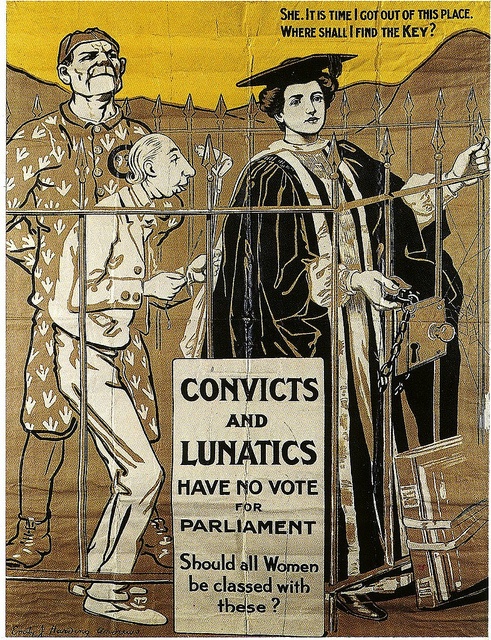
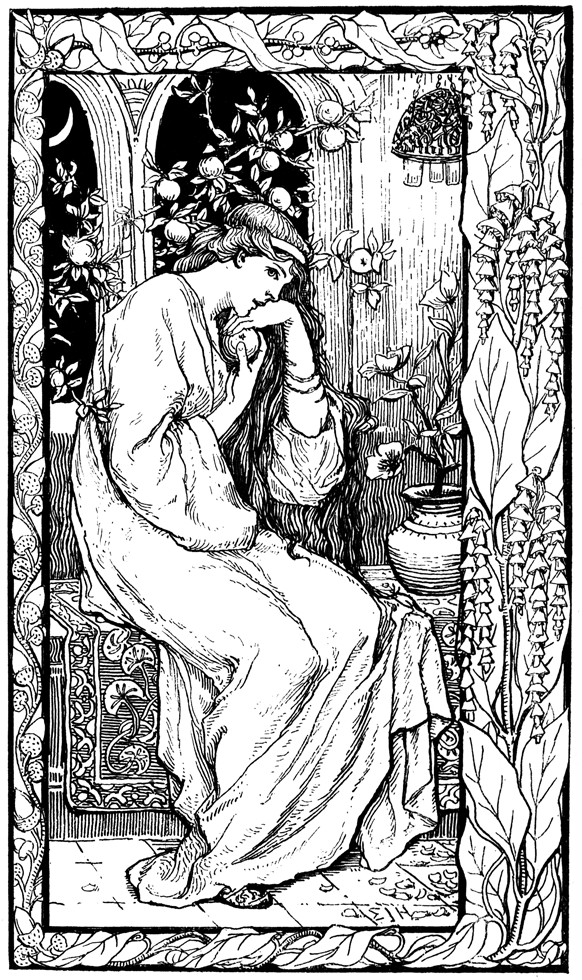
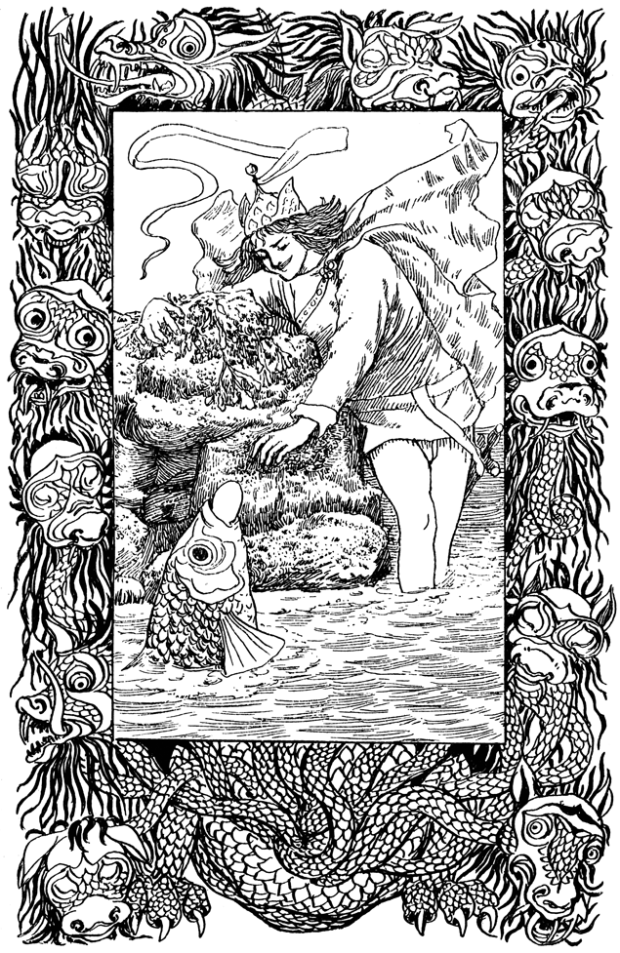
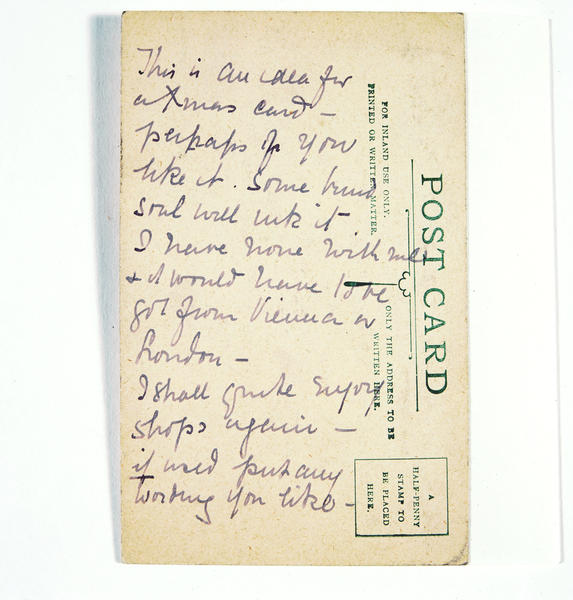
#1 by Helen Robertson on June 1, 2015 - 10:57 am
Emily was my great Aunt 🙂
I have several of her books and a hand written manuscript and original artworks for the draft book.
Did you know she was fluent in many languages & lived in Switzerland & Austria before the war? She also worked for “the gvt” during the war translating coded messages that had been intercepted! She was very adventurous even in old age! She was a lot better off than you seem to imagine. I think she may have been a gvt agent for quite some time!
I would dearly love to know more about her – an amazing woman and I’m proud to be part if her family (Her sister Gertrude was my Great Grandmother)
Thanks so much for writing this bio about her.
#2 by Diane Copenhaver on May 6, 2017 - 4:56 pm
I have an early copy (no publication date) of Slav Fairy Tales, published by A.L. Burt Company. I’ve owned the book since the 1970’s (purchased at a school tag sale), but today was the first time I looked for information on the illustrator. Thank you!
#3 by womanandhersphere on May 6, 2017 - 5:26 pm
Glad you were able to discover Emily Harding Andrews – an interesting woman.
Best wishes
Elizabeth